Search Images
Browse Content (p. 1436)
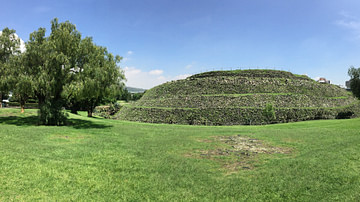
Image
Temple Mound of Cuicuilco
The circular pyramid or temple mound of Cuicuilco, Mexico. Late Preclassic Period, after 500 BCE. The mound is 118 m in diameter and 23 m high.
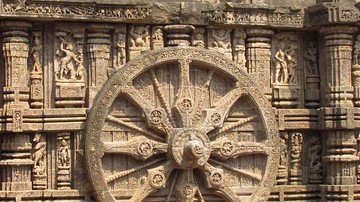
Image
Wheel, Konarak Sun Temple
Carving of a wheel on the 13th century CE Konarak Sun Temple (Konrak), Orissa, India. The temple was dedicated to the sun god Surya. There are a total of 12 pairs of wheels and the main shrine is shaped like a chariot and the wheels represent...
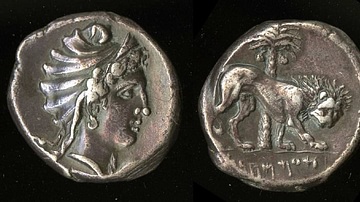
Image
Dido, Carthaginian Tetradrachm
A silver tetradrachm from Carthage. The female head has been identified by some historians as Dido (Elissa), the legendary founder of the city. Other historians identify the figure as the goddess Tanit (aka Tinnit). She wears a Phrygian cap...
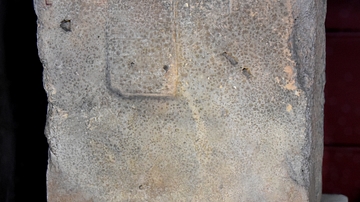
Image
Mud Brick Stamped with the Name of King Ishme-Dagan
This baked-mud brick was stamped with the name of king Ishme-Dagan; he was the 4th king in the First Dynasty of Isin and son of Iddin-Dagan. From Ur, southern Mesopotamia, Iraq. Isin-Larsa period, circa 1889-1871 BCE. (The British Museum...
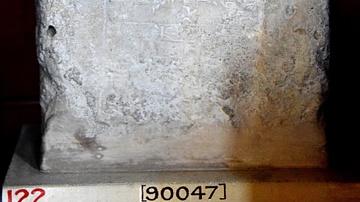
Image
Mud Brick Stamped with the Name of Warad-Sin
This baked-mud brick was stamped with the name of king Warad-Sin, king of Larsa; reigned 1770-1758 BCE (short chronology) and possible co-regency with his father Kudur-Mabuk. The cuneiform inscriptions mention the building of the temple of...
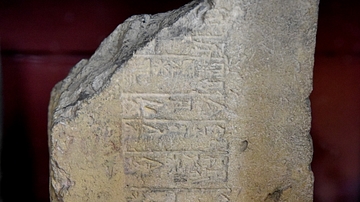
Image
Mud Brick Stamped with the Name of King Amar-Sin
This baked-mud brick was stamped with the name of the Neo-Sumerian king Amar-Sin (also spelled Amar-Suen; his name was previously misread as Bur-Sin). The cuneiform inscription mentions the king's making of a great vessel or laver, which...
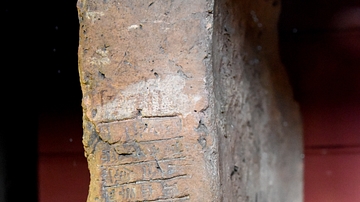
Image
Mud Brick Stamped with the Name of King Kurigalzu
This baked-mud brick was stamped with Akkadian cuneiform inscriptions. The text mentions the name of the Kassite king Kurigalzu and records the building of a temple to Bel. From Dur-Kurigalzu (modern-day Aqar-Quf, western Baghdad), Mesopotamia...
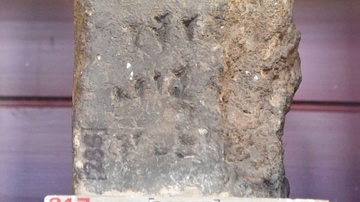
Image
Brick Inscribed with the Name of Shalmaneser III
This cuneiform inscription on this fragment of a large brick mentions the name of the Neo-Assyrian king Shalmaneser III, reigned 858-824 BCE, and the construction of a temple at the city of Nimrud (ancient Kalhu; Biblical Calah). From Nimrud...
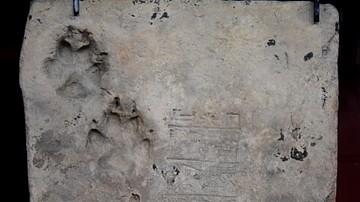
Image
Mud-Brick With a Dog's Paw Print from Ur
Mud brick stamped with the name and titles of the Neo-Sumerian king Ur-Nammu (r. 2047-2030 BCE, short chronology) from the ziggurat of Ur, southern Mesopotamia, Iraq. Note the dog's paw print; this "footprint" might well have been "stamped"...
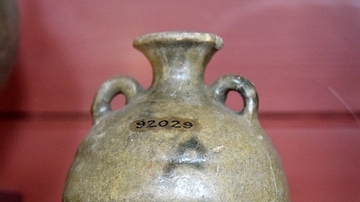
Image
Glazed Pottery Bottle from Babylon
The bottle is completely intact and has a rough glaze. From Babylon, Mesopotamia, Iraq. Neo-Babylonian period, 626-539 BCE. (The British Museum, London)